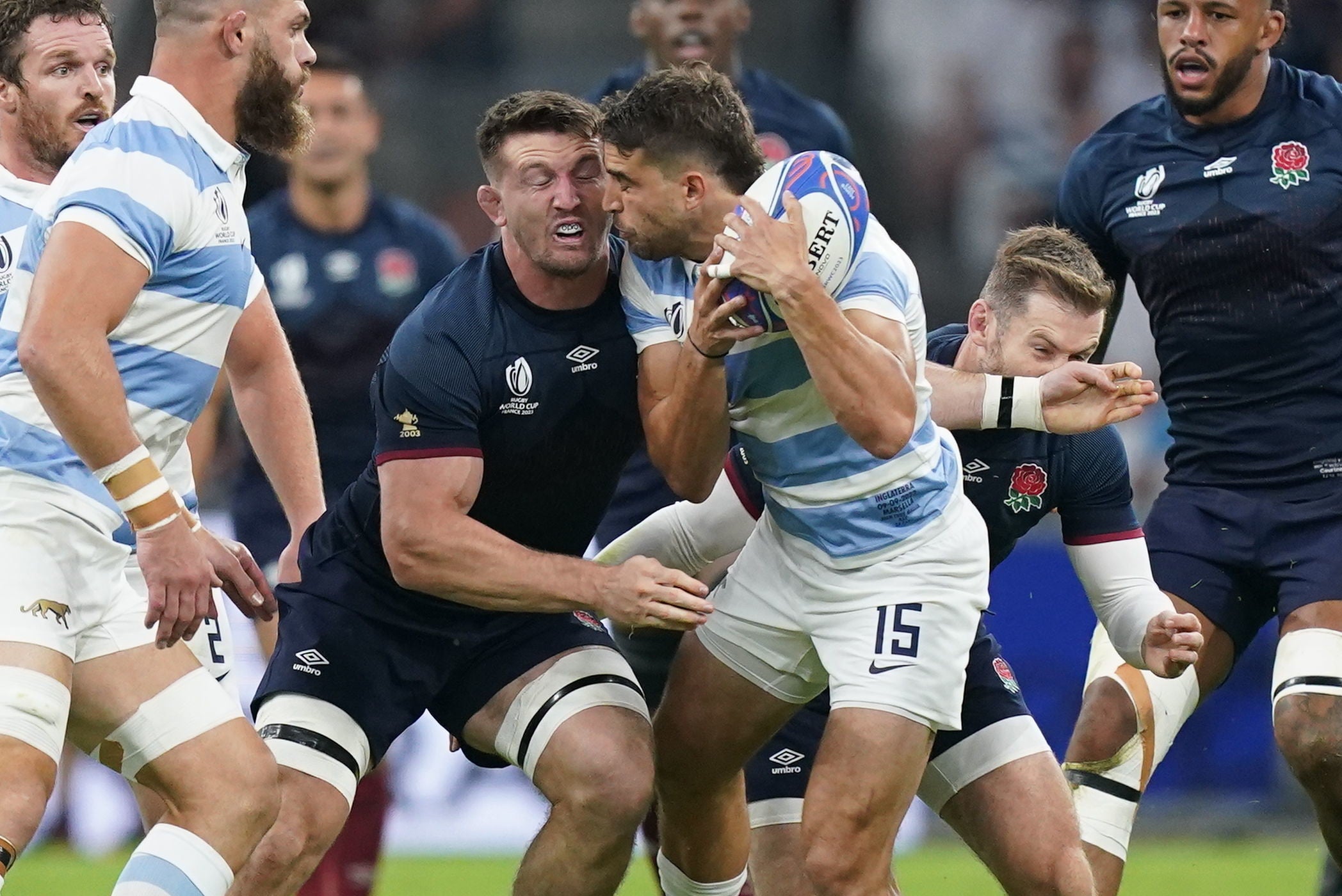Stuart Hogg: Barrett, Keenan, Steward and the superstar full-backs who will decide the Rugby World Cup
Writing exclusively for The Independent, Scotland and Lions legend Stuart Hogg discusses the No 15s who could define this World Cup and gets to grips with the red-card chaos of the opening week


Full-back is such a unique position. You have to have the fundamentals and the foundations in place: be able to catch a high ball, be that last line of defence and make good decisions on the counterattack. But the position is everchanging. Gone are the days of standing at the back and popping up in the outside channels; you can’t just be renowned for being good under high balls or having a strong kicking game. You now have to have an all-round game because you will be asked to step up at first or second receiver and organise players around you.
Other than nine and 10, the full-back is up there in a lot of games for the most touches. We have moved towards a more expansive brand of rugby. When I first started playing rugby, you had a 12 or a 13 who would crash it up the middle, make a dent in the opposition’s backline and then play second or third phase.
Teams are bringing that much line speed now that you need someone with a bit of creativity and a good rugby brain to play off, someone who can get their hands free and offload or use an attacking kicking game.
We are fortunate at the moment to have so many incredible full-backs going around and thriving in France at the Rugby World Cup. I’m biased, obviously, but I love seeing a good full-back play. It tells you a lot about the rest of the backline – how many touches are they going to get? It informs the opposition kicking game.
The element of kicking, which is needed with how good defences are nowadays, means you are also seeing full-backs be more and more involved in the game.
You get a great view of a large amount of the game unfolding in front of you – you can read two or three phases in advance where the ball is going to end up. Nine times out of 10, if you win a turnover on defence, the player picking it up is going to have their back to the opposition and all they will see is you at full-back. You are the first person the team may look for to relieve pressure or counterattack.
For me, one of the best to watch at the moment is Ireland’s Hugo Keenan. You see how many involvements he has got in set piece plays and counterattack. His kick chase and aerial skills are outstanding. The amount of times he touches the ball in a game is incredible. Ireland are a very, very clever side, they manipulate teams. On the counterattack, sometimes they’ll use return plays that involve Keenan getting the ball in the second or third phase.

Another example is New Zealand with Richie Mo’unga and Beauden Barrett – they have the licence to roam around and swap positions. Not only are they two of the best 10s in world rugby, but two of the best runners with the ball in hand. Their gameplan is built around having two out-and-out fly halves playing in the same team: they are great distributors who can slot in wherever they want, and sometimes Will Jordan will step up at first receiver, too.
Against France, centre Anton Lienert-Brown would do it, too – all these guys were mingling around the backline so they didn’t have to feel like they were rushing to play 10 and distribute. You see the number of times that Mo’unga passes the ball to Beauden Barrett at 12 – like in the first five minutes. Mo’unga to Barrett, kick to Mark Telea, who scores in the corner. It is quality to have two distributors and runners that will be able to create holes and put others into space, but also pick holes themselves.
But there are different types of full-backs, too. I think Freddie Steward is incredible. I would describe him as a very solid player – but sometimes, in my opinion, he gets very, very underrated. The key thing is that England really utilise his strengths. They stick the ball up and he goes and wins that ball 90 per cent of the time, or causes uproar in the first contact after a kick chase. He doesn’t look as quick as everybody else, but that’s because he’s got a stride that twice or three times as far as my type of player.

People say: “Let’s put Marcus Smith there, he offers something a little bit different.” Yes, he does, but so does Steward, and both England and Leicester use him well. Look at the year that Leicester won the Premiership, he was probably their best player throughout that year.
Defensively, sometimes it is a lonely, dark place. You are judged on that one-on-one tackle that sometimes, yeah, you should have made, but often you just have to tip your hat to the attacker. They are the one in the ascendancy and with all the power. Sometimes you just had to shut your eyes and hope to drag them down.
The Welsh way of defending at full-back is brilliant and I learned a massive amount about that in my times with the British and Irish Lions. One of the best one-on-one tacklers I’ve ever come across is Leigh Halfpenny. You watch him from behind, the way he tracks the ball, his work rate is off the scale. His ability to chop bigger boys down is great to see. He is one of the best full-backs I’ve ever come across defensively. His Wales teammate Liam Williams is the exact same – and he’s got the ability to jump up and get a jackal turnover on the back of that as well.
I was very fortunate that I had very good coaches who allowed me to be myself and have the freedom to play. Having Gregor Townsend with Scotland and at Glasgow for 11 years, Rob Baxter and Ali Hepher for four years at Exeter, I was just allowed to play my game. As a full-back, that’s what you want. You don’t want to be bogged down and told you need to be here, you need to be there – that’s not in our DNA.
Hopefully the red-card discourse will end and we can focus on the rugby
It’s not ideal to have so much of the discussion about the opening weekend dominated by talk of red cards. You want everybody to be playing, 15 on 15. Spectators pay a lot of money to go and watch rugby and for it to not be 15 on 15 is a bit disappointing. I felt sorry for Tom Curry because I know how much he plays on the line. A tiny little bit lower and it would have been one hell of a tackle, but, unfortunately, that’s the law. It is literally a centimetre or two difference nowadays, but it’s a red card.
The thing that keeps popping into my head is the consistency. You look at the Jesse Kriel tackle on Jack Dempsey – there’s not much difference between that and the Curry one in my eyes. One gets reviewed and gets a red card, one doesn’t get looked at.

You look at the Kriel incident: as an outside centre, he was pivotal to South Africa’s defence, bringing a huge amount of line speed on the outside. They didn’t allow Scotland to play. But on another day, that might be looked at and result in a red card. Not only are they down to 14 men, it completely changes the way that team are going to play. Are South Africa going to bring that enormous line speed every single phase if they are a man down? Probably not.
I don’t want the game to be stop-start, TMOs looking at potential red cards. But at the end of the day, the laws are there for a reason. That’s where sometimes I do get a bit frustrated because unfortunately, we are talking about red cards, refereeing decisions and the TMOs, and we’ve not even mentioned a game of rugby. That’s not what we need as a sport at the moment. We don’t want to be talking about these things, we want to be talking about the expansive game of rugby that everyone wants to see. I hope it will change over the next couple of weeks.
Join our commenting forum
Join thought-provoking conversations, follow other Independent readers and see their replies
Comments


Bookmark popover
Removed from bookmarks